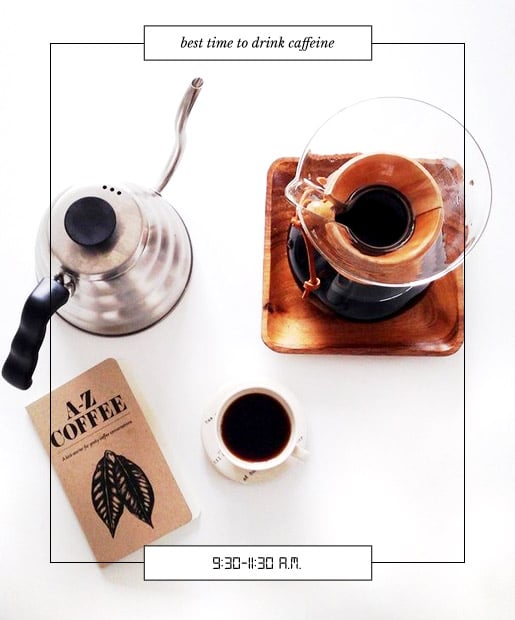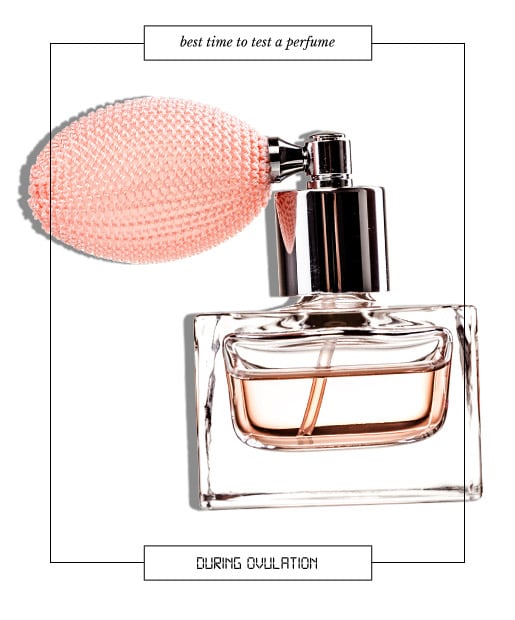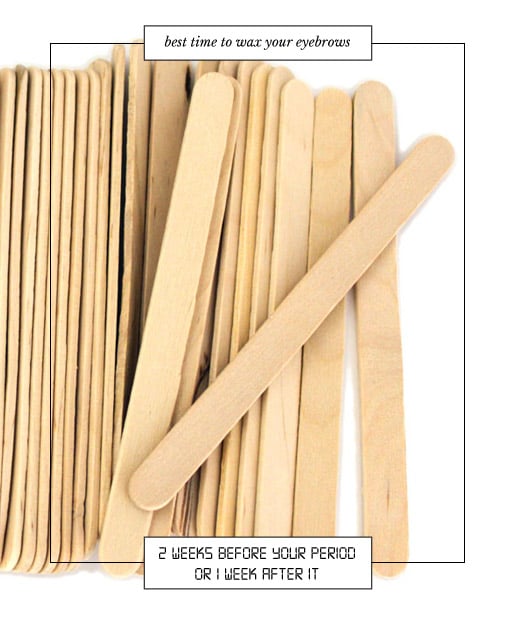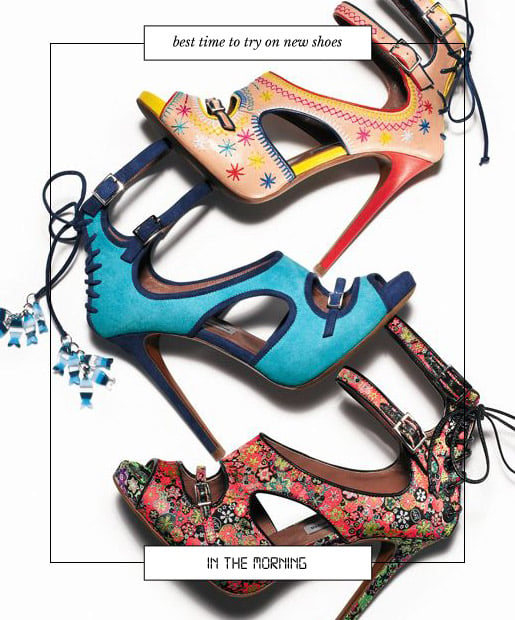When: 9:30 a.m. - 11:30 a.m.
Why: "Cortisol is a hormone that helps promote alertness and reaches peak levels in the blood first thing in the morning," says Steven Miller, Ph.D. candidate in neuroscience at Uniformed Services University of the Health Sciences in Bethesda, Md. "These blood levels tend to drop after this -- around 9 a.m. -- and spike later in the day between noon and 1 p.m., and again at 5:30 and 6:30 p.m." Miller's research suggests that the best time to drink your (first) morning cup of coffee is in the time slot when your cortisol level first begins to drop to compensate for decreased alertness.
Why: "Cortisol is a hormone that helps promote alertness and reaches peak levels in the blood first thing in the morning," says Steven Miller, Ph.D. candidate in neuroscience at Uniformed Services University of the Health Sciences in Bethesda, Md. "These blood levels tend to drop after this -- around 9 a.m. -- and spike later in the day between noon and 1 p.m., and again at 5:30 and 6:30 p.m." Miller's research suggests that the best time to drink your (first) morning cup of coffee is in the time slot when your cortisol level first begins to drop to compensate for decreased alertness.
When: During ovulation and two to three hours after you spritz a fragrance on your body
Why: During the week of ovulation, increased hormonal activity triggers a heightened sense of smell. According to Bond No. 9 Founder and President Laurice Rahme, it's best to take advantage of this sensory spike to find your new favorite fragrance. But simply smelling a fragrance on a tester strip can be misleading. "You need to wear a fragrance for a few hours to determine if you really love it and will continue to do so after leaving the department store," Rahme advises. Why? Because fragrances develop on the skin in phases or layers, and to really know what you're buying, you need reach the bottom note.
According to Rahme, the top note is what you smell right away -- "usually the sparkling and vivacious fresh notes that invite you to smell a little bit longer." The middle note, or "heart" of the fragrance, is where the essence of the scent comes through (think warm and sensual, floral and intoxicating, aromatic and clean). The bottom note surfaces last and stays with you for hours, long after the top note has disappeared. "This base is what blends with your own skin scent to create a scent individual to you," Rahme explains.
Why: During the week of ovulation, increased hormonal activity triggers a heightened sense of smell. According to Bond No. 9 Founder and President Laurice Rahme, it's best to take advantage of this sensory spike to find your new favorite fragrance. But simply smelling a fragrance on a tester strip can be misleading. "You need to wear a fragrance for a few hours to determine if you really love it and will continue to do so after leaving the department store," Rahme advises. Why? Because fragrances develop on the skin in phases or layers, and to really know what you're buying, you need reach the bottom note.
According to Rahme, the top note is what you smell right away -- "usually the sparkling and vivacious fresh notes that invite you to smell a little bit longer." The middle note, or "heart" of the fragrance, is where the essence of the scent comes through (think warm and sensual, floral and intoxicating, aromatic and clean). The bottom note surfaces last and stays with you for hours, long after the top note has disappeared. "This base is what blends with your own skin scent to create a scent individual to you," Rahme explains.
When: At night
Why: Check your labels. If you're using a retinoid product or any product containing vitamin A, you need to shift your routine from a.m to p.m. "Products with vitamin A derivatives should be applied in the evening because sunlight can lessen their efficacy," says dermatologist Dr. Jeanine Downie, director of Image Dermatology P.C. in Montclair, N.J. For best results, Downie recommends washing your face with a gentle cleanser, applying your retinoid and following with a moisturizer before hitting the hay.
Why: Check your labels. If you're using a retinoid product or any product containing vitamin A, you need to shift your routine from a.m to p.m. "Products with vitamin A derivatives should be applied in the evening because sunlight can lessen their efficacy," says dermatologist Dr. Jeanine Downie, director of Image Dermatology P.C. in Montclair, N.J. For best results, Downie recommends washing your face with a gentle cleanser, applying your retinoid and following with a moisturizer before hitting the hay.
When: Two weeks before your period, or one week after it
Why: Ever notice how much more sensitive your skin is during your period? According to Downie, the drop in estrogen levels causes your skin to lose water and become drier, which makes your skin more susceptible to irritation. To avoid extra pain on top of the aches and cramps you experience during your period, she suggests scheduling all hair removal procedures two weeks before you start. Downie also notes that hair grows faster during the hormonal surges after your cycle. To get more bang for your buck, schedule your appointments for the week after your period to get rid of more hair at once.
Why: Ever notice how much more sensitive your skin is during your period? According to Downie, the drop in estrogen levels causes your skin to lose water and become drier, which makes your skin more susceptible to irritation. To avoid extra pain on top of the aches and cramps you experience during your period, she suggests scheduling all hair removal procedures two weeks before you start. Downie also notes that hair grows faster during the hormonal surges after your cycle. To get more bang for your buck, schedule your appointments for the week after your period to get rid of more hair at once.
When: In the a.m.
Why: Your feet are smallest and truest to their genuine size first thing in the morning because, throughout the day, walking and standing causes your feet and ankles to swell to a bigger size. According to podiatrist Phillip Vasyli, chairman of Vionic shoes, it's important to buy shoes that fit this true size to avoid going up shoe sizes over time.
If you try on new shoes in the afternoon or evening, when your feet are most swollen from bearing your weight all day, you'll find they tend to slip the next morning. "This causes rotation in the ankles and poor distribution of weight, which further swells the feet in an attempt to fill that shoe," says Vasyli. "But when you wear a shoe that fits the foot at its proper size, the shoe actually helps pull or bind the foot together. If you keep the foot in a certain shape, it maintains that shape."
Why: Your feet are smallest and truest to their genuine size first thing in the morning because, throughout the day, walking and standing causes your feet and ankles to swell to a bigger size. According to podiatrist Phillip Vasyli, chairman of Vionic shoes, it's important to buy shoes that fit this true size to avoid going up shoe sizes over time.
If you try on new shoes in the afternoon or evening, when your feet are most swollen from bearing your weight all day, you'll find they tend to slip the next morning. "This causes rotation in the ankles and poor distribution of weight, which further swells the feet in an attempt to fill that shoe," says Vasyli. "But when you wear a shoe that fits the foot at its proper size, the shoe actually helps pull or bind the foot together. If you keep the foot in a certain shape, it maintains that shape."








